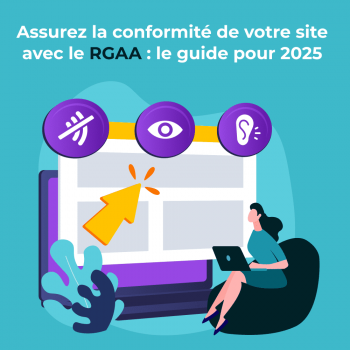Optimizing the user experience (UX) has become a top priority in the development of digital products. User testing is a crucial step in understanding and improving this experience, ensuring that products truly meet users' needs.
What is User Testing?
User testing involves the direct observation of users interacting with your product under realistic conditions. This method enables us to identify obstacles encountered by users, and to make significant improvements based on concrete data.
Why user testing is essential
User testing offers a wealth of insights into how users interact with your product. They reveal valuable insights that cannot be uncovered by other evaluation methods, enabling you to fine-tune navigation, understanding and commitment to your digital solution.
User Testing Methodology
User testing is a crucial stage in the design and development process of a digital solution. Their effective implementation relies on a rigorous methodology, spread over several key stages:
- Preparation : Before testing, it's essential to clearly define the objectives of the study. What questions do you want to answer? What aspects of the interface or user experience do you want to evaluate? Next, a detailed test scenario must be drawn up, including the tasks to be performed by the participants and the evaluation criteria.
- Recruiting participants: Selecting the right participants is crucial to obtaining relevant results. It's important to target user profiles that are representative of your target audience. Recruitment can be done via online panels, social networks, or even in-house if you have a user base.
- Test execution: During this stage, participants carry out the tasks defined in the test scenario, while expressing their thoughts and impressions aloud. It is essential to remain neutral and not influence participants, in order to obtain authentic feedback. Tests can be carried out in person, remotely via videoconferencing tools, or even automated in some cases.
- Analyzing the results : Once the tests have been completed, it's time to analyze the data collected. This analysis can take various forms, such as direct observation of participants' behavior, analysis of responses to questionnaires, or the use of user interaction analysis tools. The aim is to identify the strengths and weaknesses of the tested solution.
- Recommendations: Finally, based on the results obtained, recommendations for improvement can be formulated. These recommendations must be specific, feasible and geared towards optimizing the user experience. They may concern ergonomic aspects as well as specific functionalities of the digital solution.
By following this rigorous methodology, you maximize the chances of gaining valuable insights into the user experience of your digital solution, enabling you to make the necessary adjustments to best meet your users' needs and expectations.
How to prepare and conduct an effective User Test
Preparing an effective user test goes beyond simply setting up the logistical elements. It requires a thorough understanding of user needs, as well as the specific objectives the design team is seeking to achieve. By clearly defining these objectives, the team can better guide test scenarios and ensure that the results obtained will be relevant and exploitable.
The selection of participants is also a crucial aspect of preparation. It's essential to choose people who accurately represent the target audience for the digital solution under development. This may include novice users, domain experts, or even people with specific needs. By recruiting a diversity of profiles, the team can gain varied perspectives that enrich the analysis of test results.
Finally, setting up an optimal test environment goes beyond simply configuring the hardware. It's also about creating a welcoming, pressure-free atmosphere for participants, where they feel comfortable expressing their opinions and frustrations. A friendly environment encourages more natural interactions and more authentic feedback, which in turn contributes to the quality of the data collected and the relevance of the recommendations made following the test.
Exploiting the results of User Tests
By analyzing the data collected, we can identify trends, friction points and opportunities for improvement. The resulting recommendations are directly applicable, promoting rapid, well-founded product evolution.
Optimizing the User Experience requires a strategy based on clear, measurable objectives
- A thorough understanding of the user implies gathering detailed insights into his or her behaviors, preferences and expectations.
This enables you to prioritize the problems to be solved and propose targeted solutions, rather than assuming what users want or identifying all problems indiscriminately.
- Ensure that every element of your solution matches the real needs of your users.
By focusing on the user, testing helps to validate hypotheses, detect usability problems, and contribute to the development of recommendations based on real data rather than guesswork.
- Prevent costly design errors and unnecessary development by understanding user needs from the outset.
Identifying problems early avoids costly revisions down the line. What's more, user testing prevents the development of features based on incorrect assumptions.
- Encourage continuous improvement.
User testing is not a one-off event, but an ongoing process. User feedback is integrated into a rapid iteration cycle, enabling continuous product refinement and rapid reaction to changing needs.
From Insight to Action: Ylly's complete User Testing Methodology
To achieve these goals, Ylly offers a range of user testing solutions, tailored to each phase of your project:
- Qualitative testing : For an in-depth understanding of motivations and behaviors through interviews, usability tests and field studies.
- Quantitative testing: To validate hypotheses with solid data, through surveys and A/B tests.
- Heuristic Analysis: To evaluate your product against recognized UX and usability principles.
- Continuous Testing: To integrate user feedback into an agile iteration process, ensuring constant product improvement.
Thus, integrating user testing into the development cycle ensures user-centered design, increasing end-user satisfaction and commitment. By implementing a well-structured user testing strategy, companies can significantly improve the UX of their digital products.
To find out more about implementing user testing and integrating it into your development processes, contact us!








